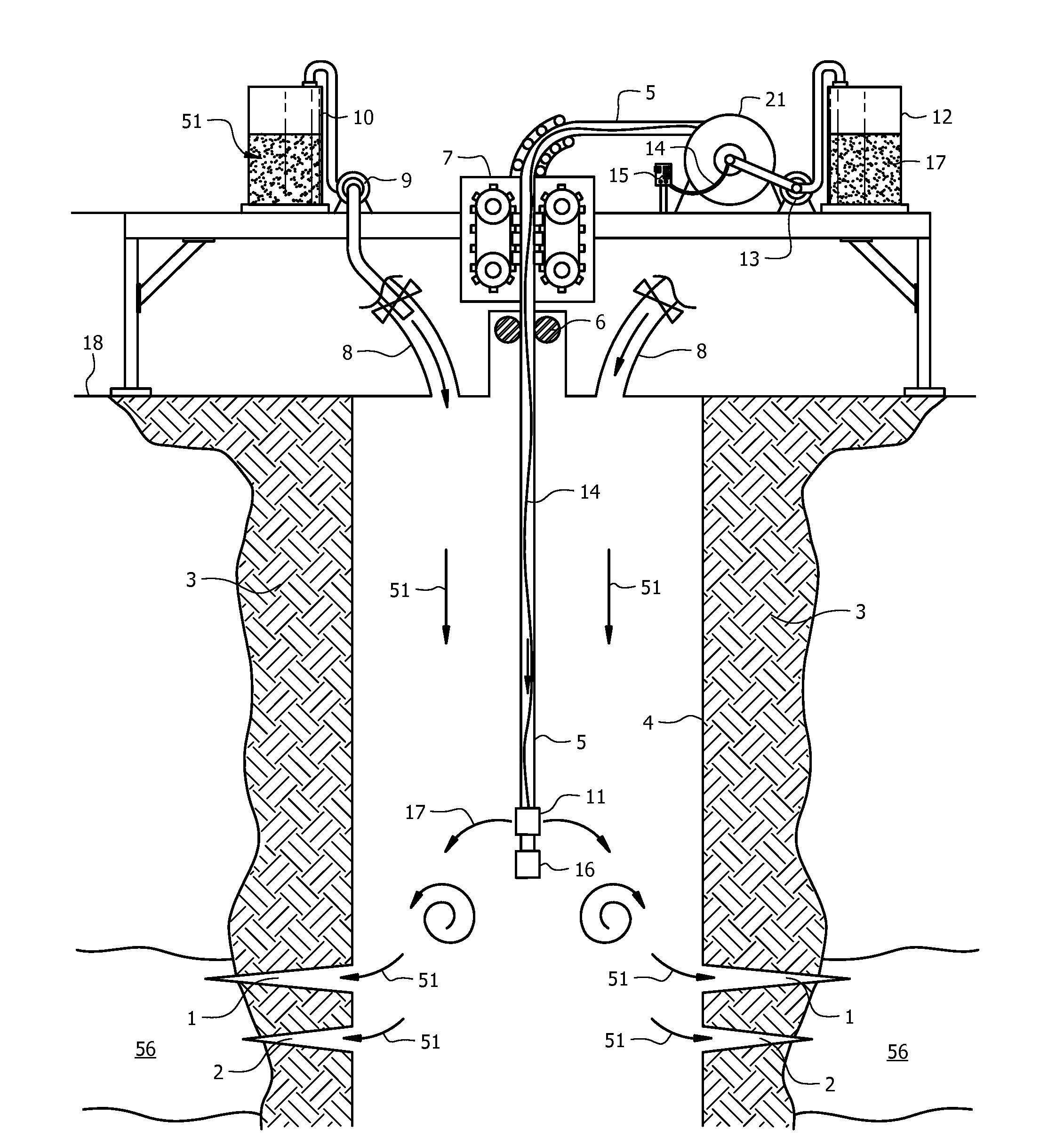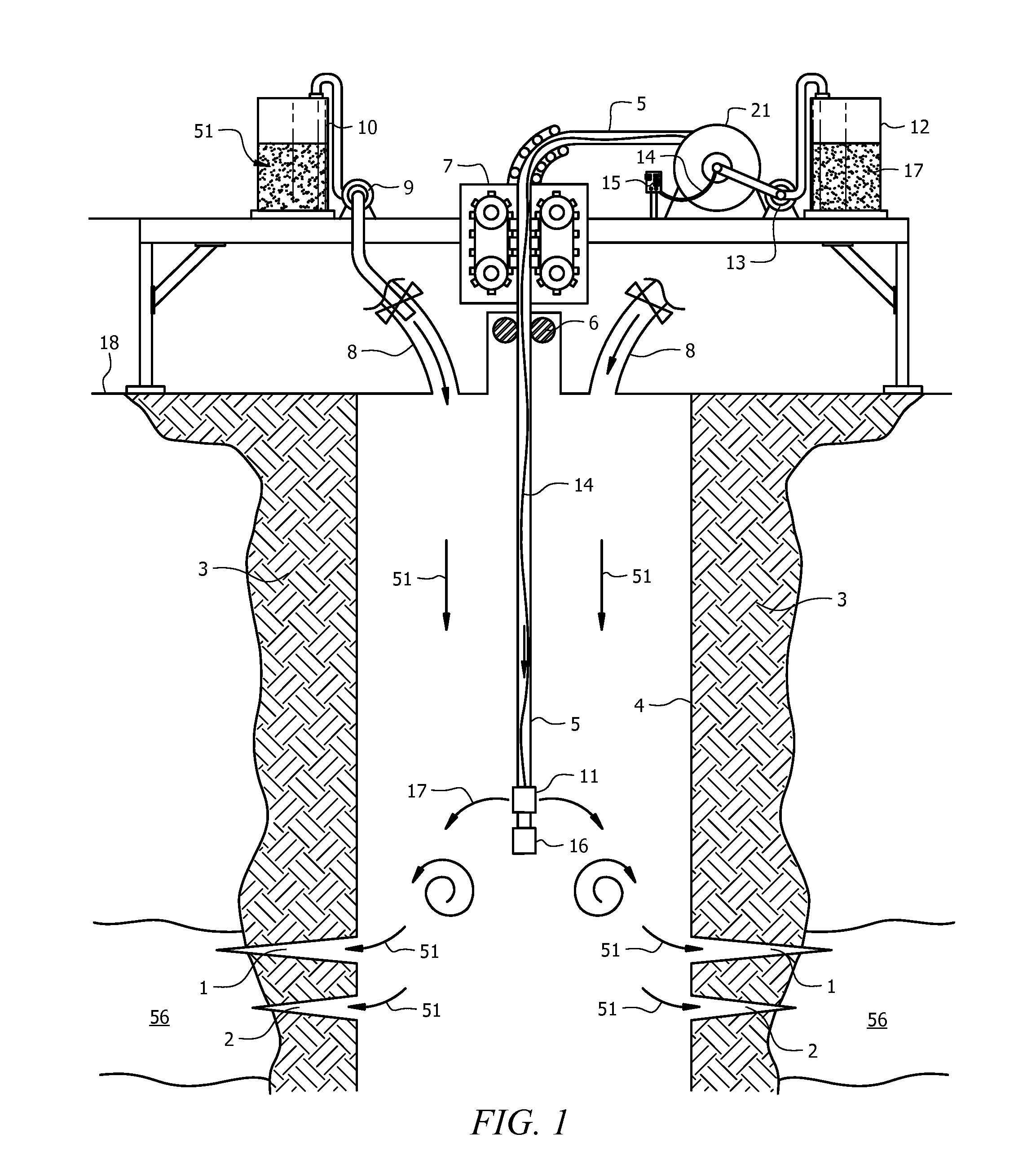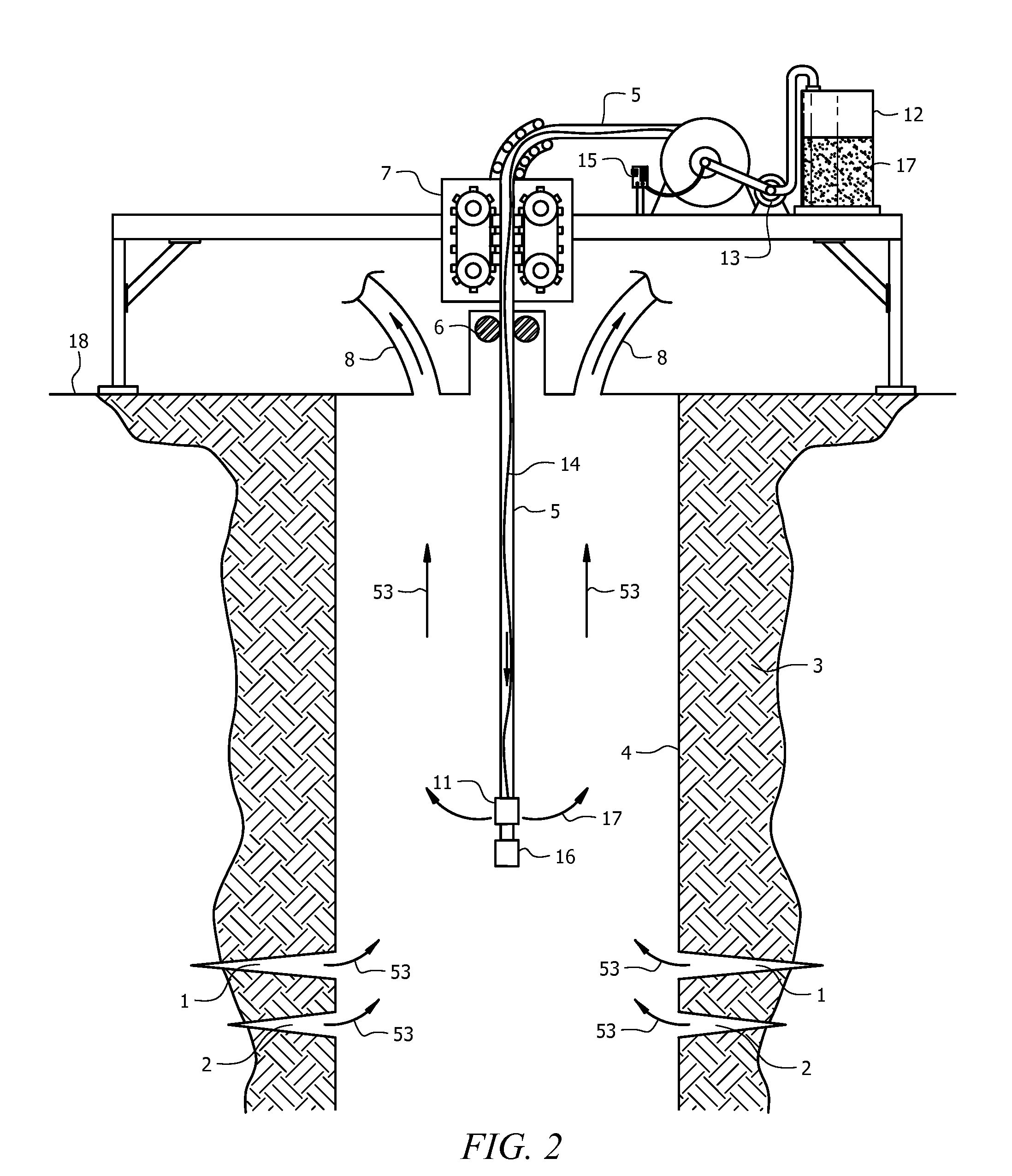Without the
friction reduction chemicals, the amount of hydraulic
horsepower required to inject fluids into the well becomes higher requiring more surface pumping power and equipment thereby, drastically increasing the cost of a stimulation treatment.
Hence, one often faces the dilemma whereby if one performs a stimulation or hydraulic
fracture treatment without friction
reducer chemicals in the fluid, the cost of injection is much higher due to energy costs, but if one opts to mix at
surface friction reduction chemicals in the stimulation or hydraulic fracture fluid to reduce
horsepower requirements, damage to the subterranean reservoir from said friction reducers occurs.
Furthermore, as fluids are flowed back to the surface after the injection process these flowed-back fluids containing chemicals used during the injection cause environmental damage to the surface environment and to well tubular that transduce them to surface.
This damage can be scale deposits in the well casing,
corrosion in the well casing, and detrimental effects on surface flow back equipment.
Often to reduce the surface damage to the environment, the fluids must be treated with additional chemicals at the surface or specially disposed of at surface, further increasing the cost to using fluids and chemicals on injection jobs like said stimulation and
fracture treatments.
Moreover, there are other problems with these injected fluids when they are produced back from the wells.
There are many detrimental issues with this produced-back stimulation fluid, mostly owing to the fact that the produced-back fluids are complex mixtures of a number of chemical materials and are further contaminated from the subterranean environment after the injection process and often contain
bacteria, salts, scales, gases, enzymes, viruses, and other materials that are not suitable for surface handling, disposal or re-injection into wells during a subsequent stimulation or hydraulic
fracture process.
These compositions injected at surface often reduce the hydraulic friction pressure developed between the well tubular and the fluids being pumped down the well hence the required hydraulic
horsepower for the injection, but the result is that the chemicals mixed at surface often cause residual damage to the reservoir.
The damage often diminishes subsequent production of hydrocarbons from the reservoir.
This damage results in part, because these chemicals, usually large
polymer chains, have long molecular structures and significant
surface tension, making their
recovery from the reservoir rock during stimulation flow back difficult.
Furthermore, the stimulation fluids having the chemicals mixed into them at surface, and having a certain amount of
oxygen entrained from the surface mixing process, react in-situ in the reservoir enhancing
bacterial growth and resulting in unwanted gas,
bacterial growth, fluid pH modifications and scale.
These surface-mixed chemicals and fluids combine in the reservoir with heat and
oxygen from the surface to accelerate
bacteria growth in the stimulation fluid leading to the detrimental generation of in-situ gases,
bacteria, fluid pH modifications, and scale, that combine with these reservoir fluids and polymers to cause
corrosion and scale
precipitation to occur in the reservoir and well.
Furthermore, these chemicals and fluids, when flowed back to the well surface, result in toxic surface fluids that are note easily and inexpensively disposed.
Finally, the flowed back stimulation fluids with the injected chemicals and fluids now representing bacterial loaded fluids are unsatisfactory to re-inject during subsequent
well stimulation treatments.
If crosslinking occurs in the fluid too quickly, then there will be excessive
viscosity developed in the fluid being transported through the well tubulars causing increased fluid hydraulic friction between the fluid and the well conduit too early in the
transport time of the fluid in the well conduit, thereby causing the surface
injection pressure to become excessively high and resulting in the need for more surface hydraulic horsepower to inject the fluids.
This timing of cross linking is difficult to achieve in practice as it is a function of the well depth, well temperature, fluid pH,
fluid temperature, gel and crosslinker mixing proportions achieved on surface in a dynamic “
on the fly” mixing process, and the
injection rate of the fluids.
Currently, the crosslinking effect cannot be quickly controlled and changed from surface as the fluids in the well have already been mixed at surface and because the reservoir being injected to can be miles away in depth from the surface, hence the transient time between the time at which the crosslinked fluid is injected at surface and the time at which it arrives at the perforations in the reservoir is typically longer than is desirable.
However, when surface mixing crosslinkers or other
fluid viscosity modifiers, it very difficult to rapidly change the friction pressure of the fluids by the effect of crosslinking of the gelled fluid.
This is due to a number of reasons, including the significant distances that the fluid being injected must travel from the surface to the reservoir and resulting long
transit time.
A still further problem presented by current oil and
gas industry methods of crosslinking and
viscosity-modifying fluids is that is in many wells, fluids are injected in large zones separated by many thousands of feet.
 Login to View More
Login to View More  Login to View More
Login to View More 


